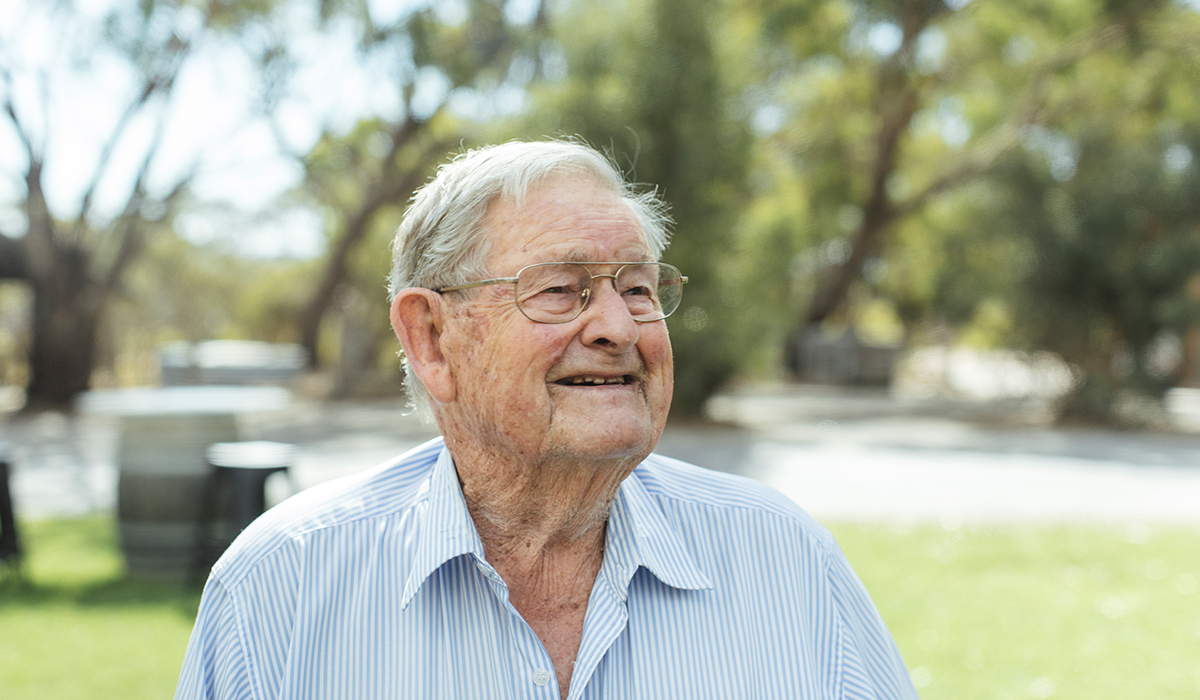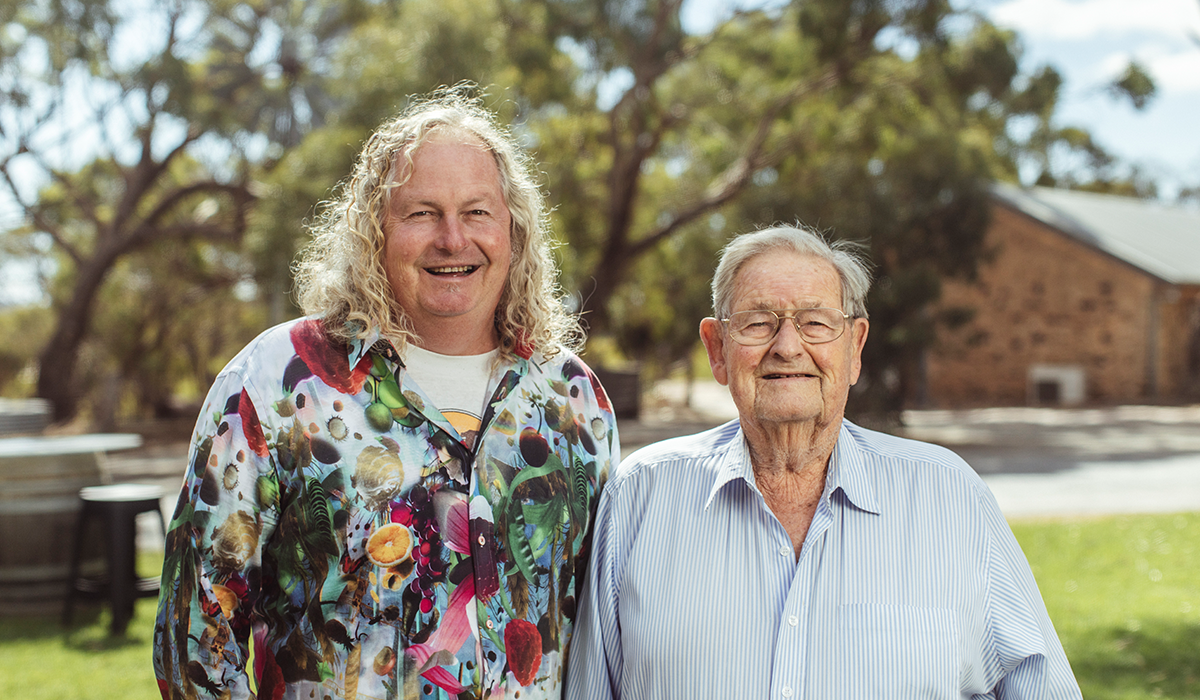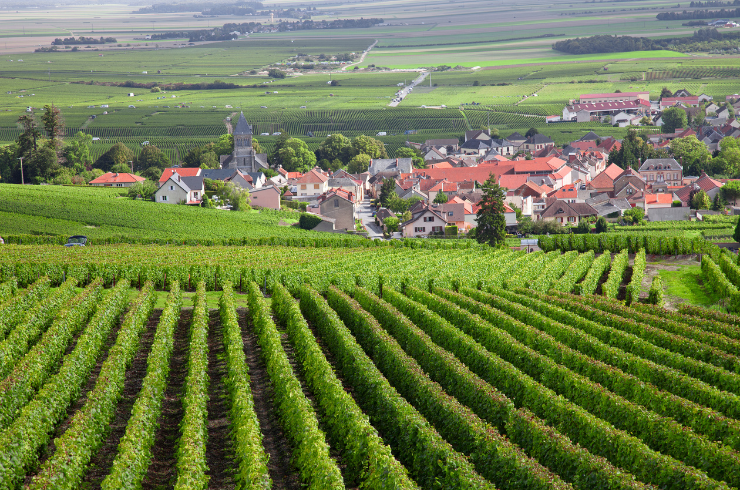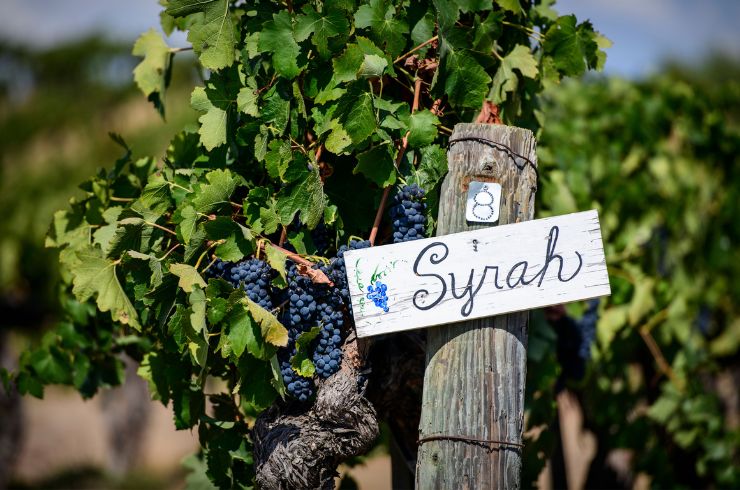Francis d’Arenberg (d’Arry) Osborn was born on the d’Arenberg Vineyard on 27 December, 1926, and commenced full-time working with it in 1943. Writing in my Australian Wine Compendium, published in 1985, I observed, ‘d’Arry Osborn is loved and respected by everyone in and around the wine industry. It is hard to imagine a more honest, gentle and open man, or one who is more passionately devoted to maintaining the integrity of the wine industry in general and McLaren Vale in particular.’
His father Francis Ernest (Frank) Osborn purchased his first vineyard with vines dating back to the 1890s. Initially simply selling all the grapes, he moved to using part of the crop to make a vintage port and a massive dry red with all the pressings returned, part sold in bulk, part in unbranded flagons.
d’Arry moved to establish a brand for sales in bottle when his father died in 1957. Neighbour Ben Chaffey of Seaview was adamant that the label should be instantaneously recognisable (cooee, present day brand managers), and should not look out of place in the formal surrounds of a dining room table. The diagonal blue stripe of the Houghton White Burgundy was a familiar sight at home because Houghton’s owner, the Emu Wine Company, gave bottles as Christmas presents. Don Allnutt, a close friend of d’Arry, designed the label with a red diagonal stripe, first used in 1959 or 1961 (records disagree, but that’s of no consequence).

It wasn’t long before the grenache-based 1967 d’Arenberg Burgundy burst on the scene in 1968, winning seven trophies and 25 gold medals at Australian wine shows. Even Len Evans was moved to praise its richness and depth. This alone would have ensured a sharp lift in the amount made, but the year later d’Arry won the Jimmy Watson Trophy with his 1968 Estate Grown Cabernet Sauvignon. He is not on the record collecting the trophy, but had gained local attention by wearing a dinner shirt in the winery during vintage “to give the reds more elegance.” This must surely have been encouragement for son Chester’s vast wardrobe of brightly coloured shirts collected as he toured the world in his marketing role.
By 1983, branded wine sales had risen to 38,000 dozen bottles, and Chester (with a graduate degree in oenology from Roseworthy) had arrived, and was to drive production to today’s count of 220,000 dozen bottles. In the meantime, d’Arry received numerous richly deserved honours and awards over every decade since the 1960s.
In December 1992, I tasted 26 of the vintages from 1961 to 1992 (with some gaps where d’Arenberg had no bottles of the vintage in question), and later vintages tasted on release. Looking back at the tasting notes the '63, '64, '70, '86, '87, '88, '91, '94, '95, '97 and '99 were all admirable, although the long arm of brettanomyces reached out in the '60s and '70s. It was rife in the Hunter Valley over the same period, but wasn’t identified until the independent research of the Australian Wine Research Institute and Dr Pascal Chatonnet.

d’Arry Osborn was 95 when he died, and my last personal recollection (pre-covid) of him was driving a ride-on lawnmower as a member of a group of wine journalists arriving for a tutored tasting of the dauntingly complex geology of McLaren Vale. He stopped to give us a wave before moving on as the grass clippings flew in all directions (including ours), quite content that Chester should run the workshop.
Another task he must have been happy to delegate to Chester was the assemblage of the weird and wonderful names for the individual shirazs, such as The Sardanapalian, The Blind Tiger, The J.R.O Afflatus, The Amaranthine Single Vineyard, The Eight Iron, and The Piceous Lodestar, all from 2015 and all at $105 each.
The memorial ceremony held on January 17, 2023, spoke louder than words: despite the heat wave, 500 joined in person for the event, and another 200 (I was one) by livestream.
This article appears in issue #69 of Halliday magazine. Become a member to receive the print publication as well as digital access.
Latest Articles
-
News
The power of perspective: Ryan Ponsford's Entropy
2 Dec 2025 -
Events
Halliday Wine Academy: Wine Immersion Tours
30 Nov 2025 -
Travel
Scenic's Southern France and Bordeaux river cruises are tailor made for wine lovers
30 Nov 2025 -
News
What’s in a name? The etymological origins of popular grapes.
30 Nov 2025



